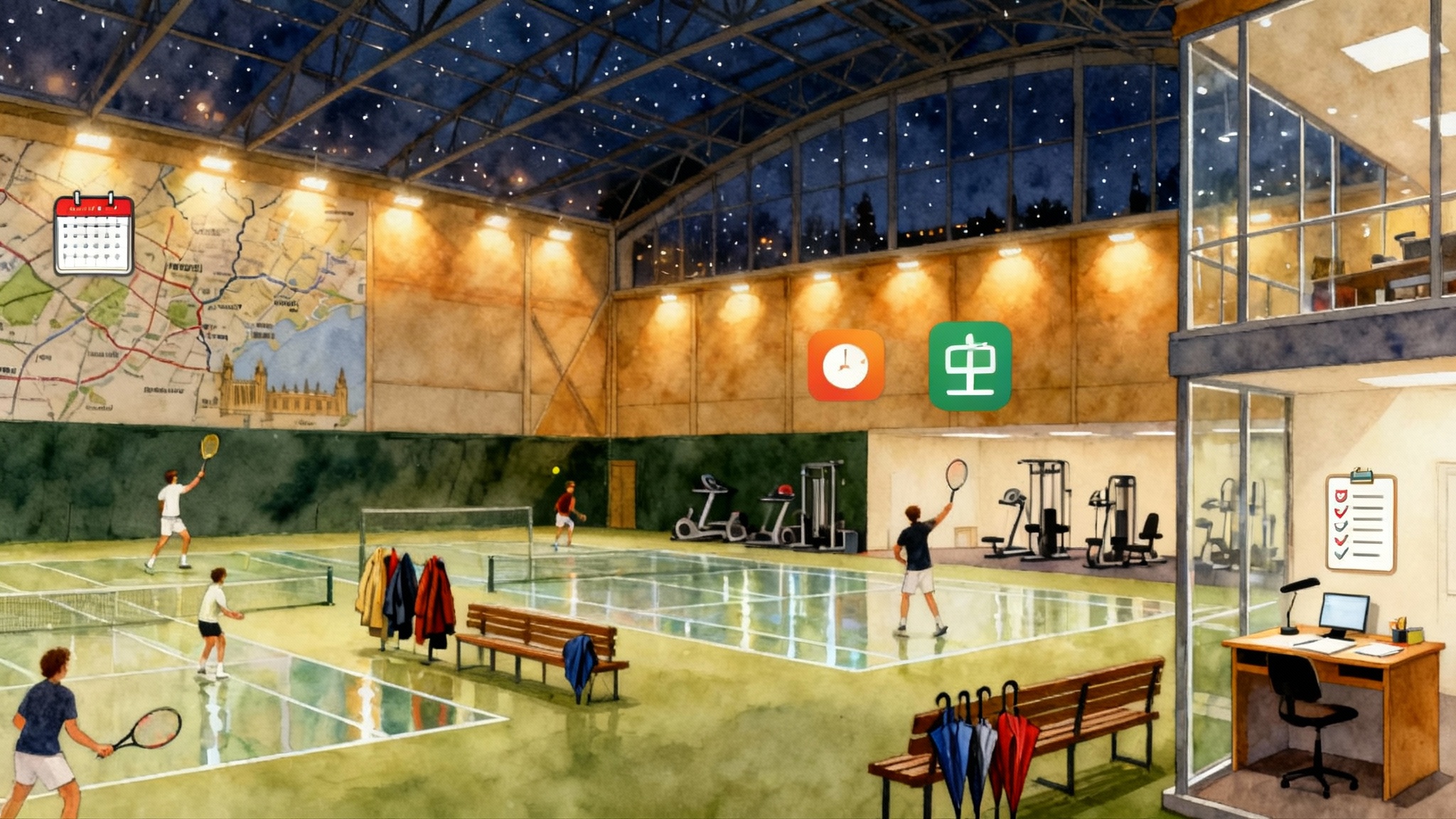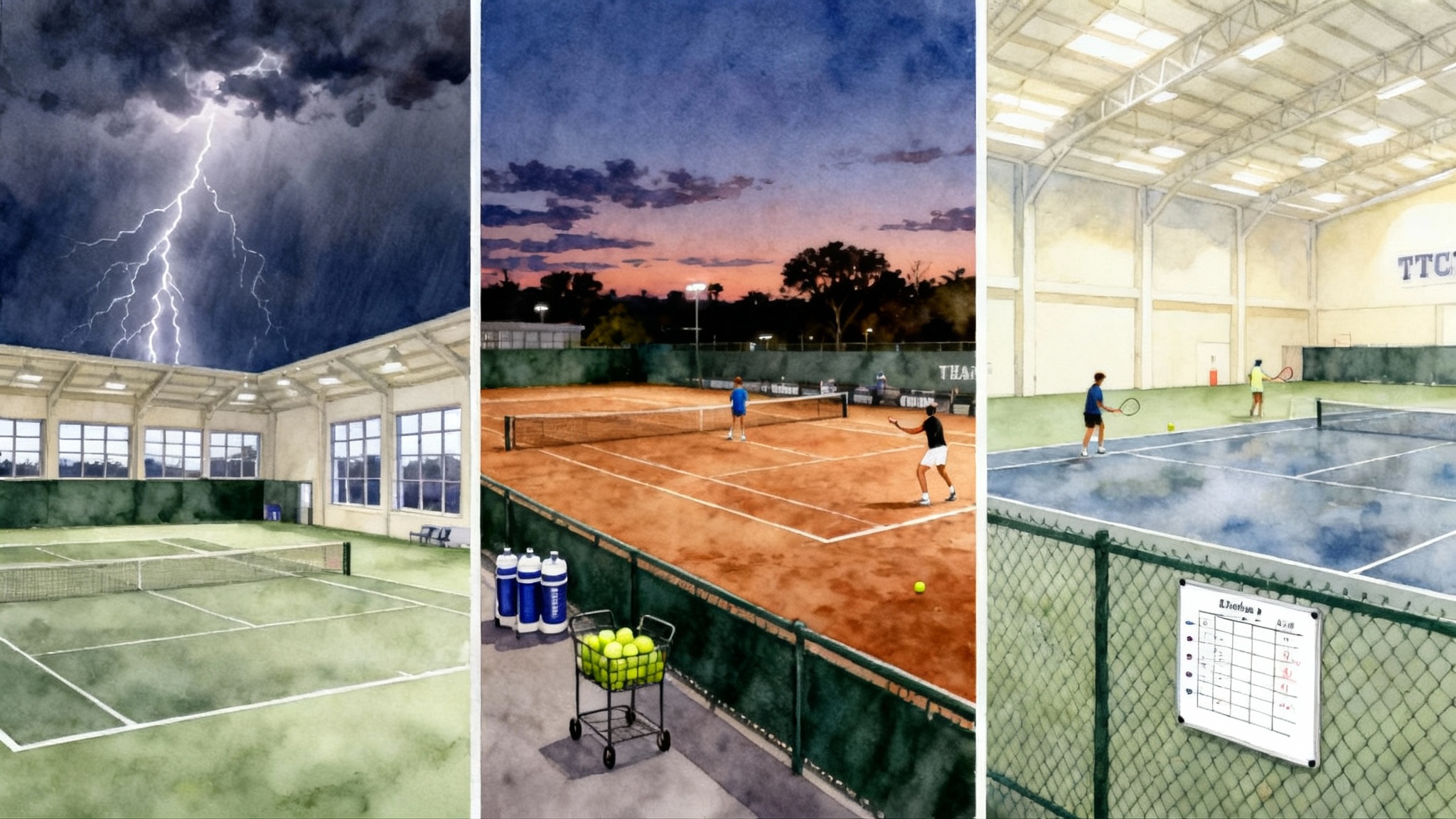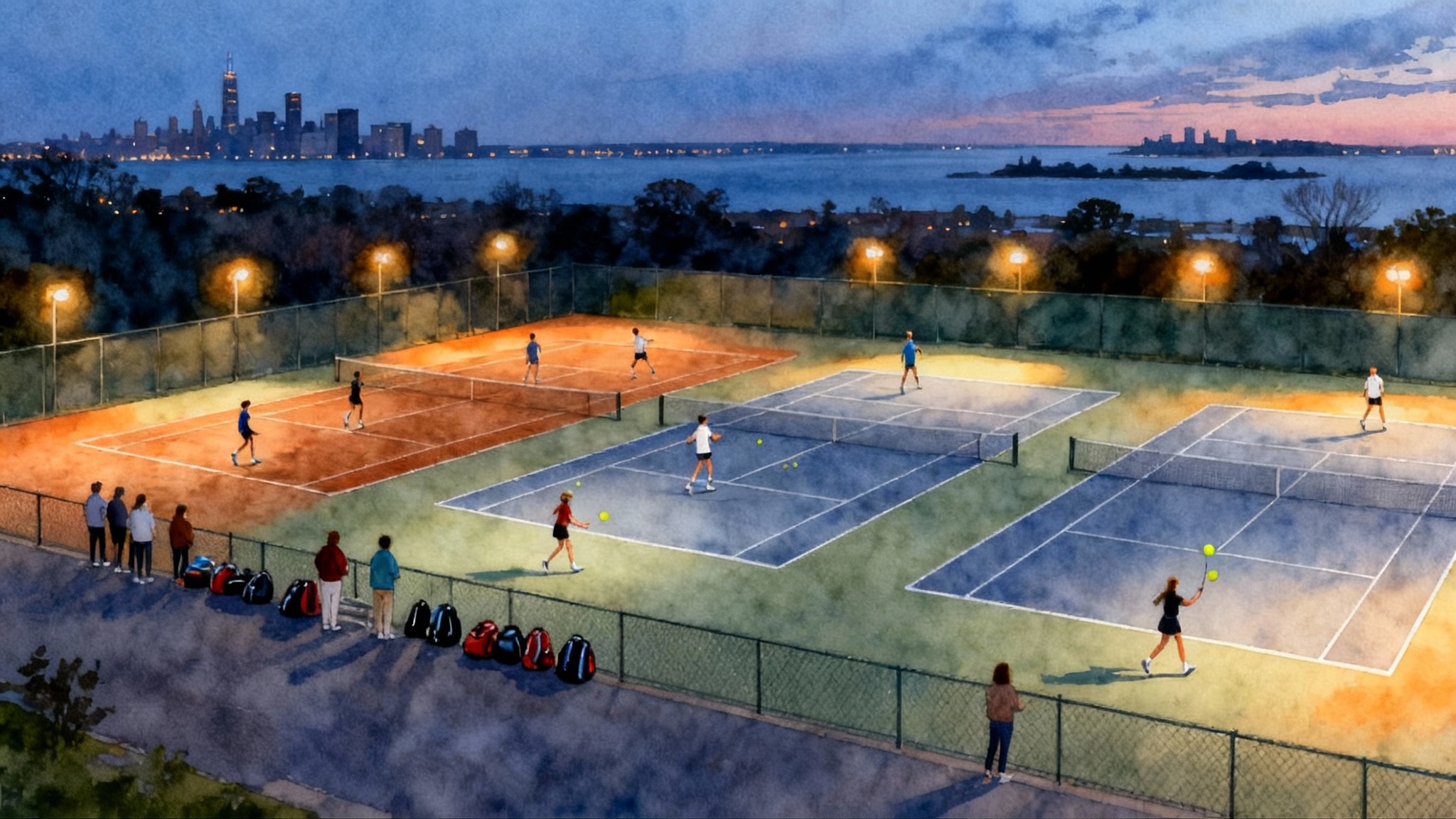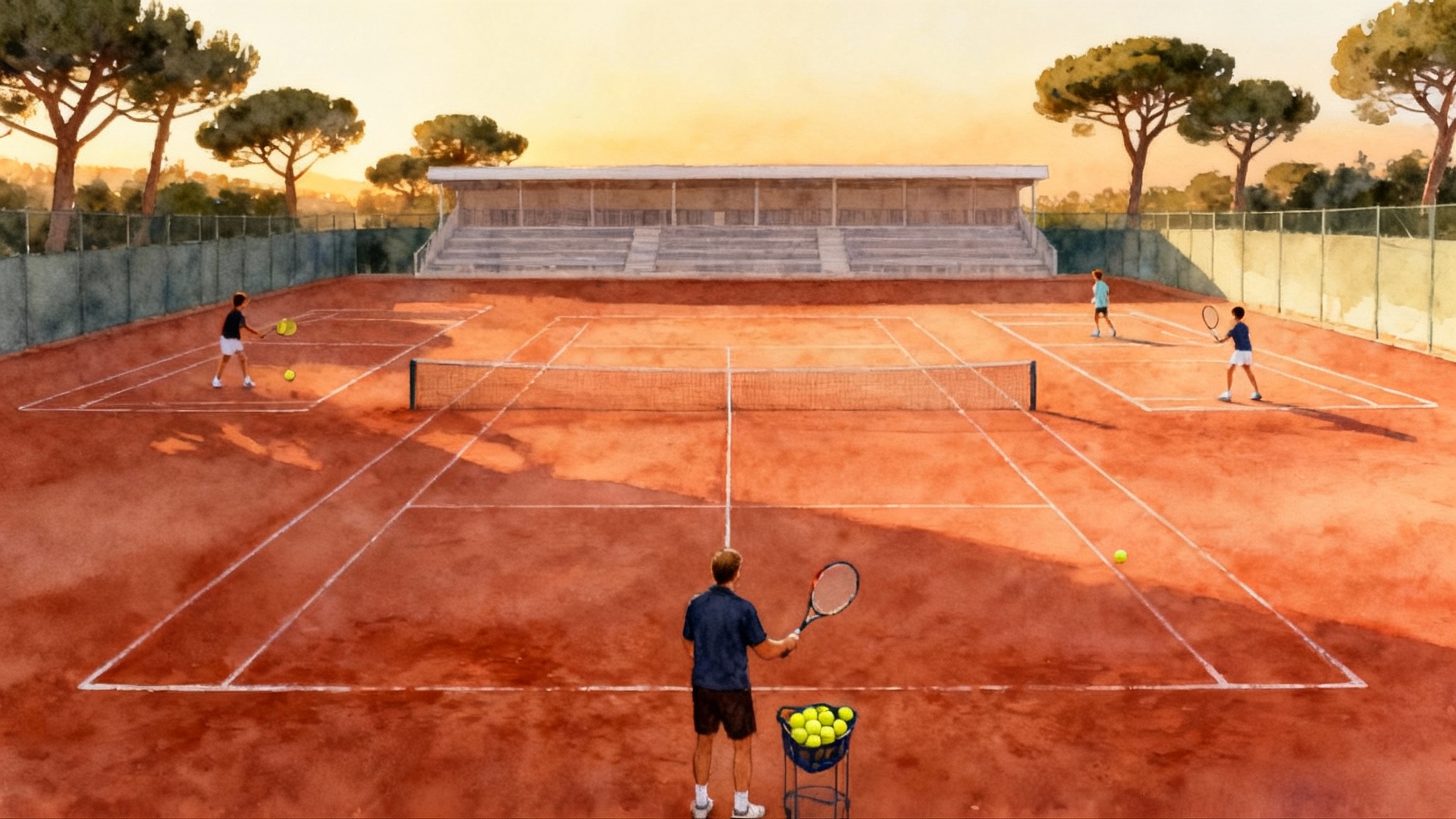Best Tennis Academies in DC, Maryland, Virginia 2025–2026
A parent-focused, data-rich guide to the DMV’s strongest junior tennis academies for 2025–2026. Compare training hours and coach ratios, court surfaces, fall tryout windows, pricing, scholarships, commute vs boarding, tournament support, and college results.
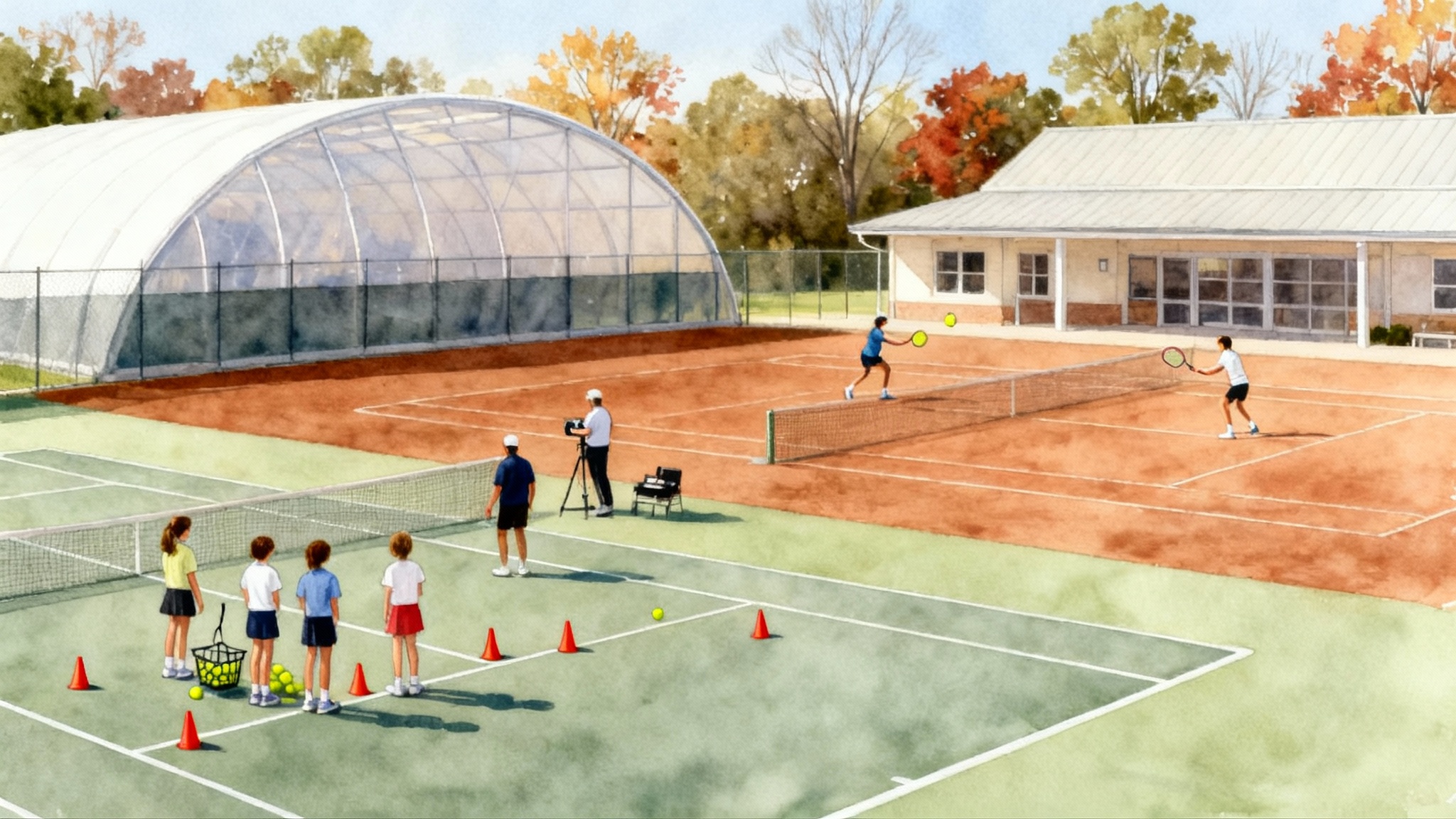
How we built this parent-first guide
If you are moving a player from recreational clinics to a true development pathway, you need more than hype. You need hours on court, a coach who knows how to scale the work, a surface mix that fits the player’s style, a clear price, and real support at tournaments. We benchmarked leading options across the District of Columbia, Maryland, and Virginia on the metrics parents ask about most.
What we compared
- Training time: weekly hours of tennis plus fitness and match play
- Coach to player ratio: smaller groups accelerate repeatable reps and feedback
- Surfaces: hard vs clay availability, indoor vs outdoor, year-round access
- Fall 2025 intake: tryout or evaluation windows and start dates
- Pricing transparency: posted rates for clinics, privates, and memberships
- Scholarships and financial aid: who offers real assistance
- Commute vs boarding: daily drives, school integration, and whether boarding is viable in the DMV
- USTA and ITF tournament support: on-site coaching, travel, and planning
- College placement: which programs consistently place players in college tennis
A quick note on expectations
- For high performance tracks, expect 8 to 18 hours per week of combined tennis and fitness during the school year, and 20 to 30 hours in summer blocks.
- Ratios that deliver results are typically 1 coach to 4 or 6 players in yellow ball high performance, and 1 to 6 or 8 in green or orange ball development.
- In the DMV, boarding academies are rare. Most serious players commute and either attend a local school that permits early release or use a hybrid schooling model.
The region’s proven hub: JTCC, College Park, Maryland
The Junior Tennis Champions Center is the area’s reference program for turning committed juniors into strong college prospects and, in a few cases, pros. The full-time Champions track blends academics, two daily tennis blocks, daily fitness, mental skills, and college counseling. The posted daily plan shows four hours of tennis and one hour of fitness on school days, plus coaching at selected sectional and national events. See the current outline on the official page: JTCC Full-Time Champs schedule and support.
- Training hours: part-time tracks run 6 to 12 hours per week during the school year; the full-time track runs 20 to 25 hours across tennis and fitness.
- Ratios: high performance blocks typically operate 1 to 4 or 1 to 6 depending on court and level. Private lesson options exist for targeted work.
- Surfaces: strong year-round hard-court access; clay exposure can be added through summer tournament scheduling and select club partnerships.
- Fall 2025 intake: assessments are ongoing through late August and early September. The new Chantilly, Virginia location posts fall sessions beginning the week of August 18, 2025 for development tracks.
- Pricing transparency: sample posted figures include member private lessons around low 100s per hour depending on coach seniority, and weekly summer high performance blocks in the 800 dollar range. Group tuition for school-year high performance varies by level and frequency.
- Scholarships: JTCC is a nonprofit with documented need-based awards and donor-funded high performance scholarships each season.
- Tournament support: coaching at select USTA and ITF events is included in the full-time package and available a la carte for part-time athletes.
- College placement: JTCC reports alumni scholarships to more than 130 colleges and universities, with a long list of Division I placements.
Parent takeaways
- Who thrives: self-driven, tournament-active juniors who want a college pathway and can handle daily fitness, film review, and match charting.
- What to ask: request a three-week sample schedule that shows tennis, fitness, mental skills, and study hall. Ask for the fall travel calendar and how many events include courtside coaching. Confirm your player’s working ratio and who, by name, delivers feedback weekly.
Strong club and county programs to compare
Parents often do best when they place a younger player in a serious club or county program that nails fundamentals at the right ratio, then add targeted private lessons and a clear tournament plan. These are the DMV programs that check those boxes.
Montgomery TennisPlex, Boyds, Maryland
One of the region’s largest indoor operations, with three air-conditioned bubbles, year-round hard courts, and a dense class schedule. Transparent, session-based pricing makes budgeting straightforward. Fall 2025 junior sessions post two-hour green or yellow ball classes around the mid 400s per session, with multi-day discounts. Check current listings: Montgomery TennisPlex fall 2025 junior sessions.
- Training hours: stackable two-hour blocks let families build 4 to 8 hours per week in-season.
- Ratios: development groups typically run 1 to 6 to 1 to 8. Ask for exact max per class.
- Surfaces: indoor and outdoor hard. Reliable option for weather-proof reps.
- Fall 2025 intake: rolling registration, with fall blocks starting late August and early September.
- Pricing: clear session fees by day and level; contract indoor court time published for families who want consistent practice windows.
- Scholarship notes: limited; ask about occasional need-based discounts or work-study in camps.
Best for: families that want predictable indoor time, clear fees, and a broad class menu from red ball to tournament prep without a long commute.
Aspen Hill Club, Silver Spring, Maryland
A rare DMV facility with significant clay and hard inventory. Ten indoor courts include bubbled clay and hard options, and in the outdoor season the club runs 13 clay courts and additional hard courts. For developing juniors, that surface variety matters. Clay builds patience, shape, and footwork. The club posts seasonal junior and adult schedules and publishes membership categories with add-on clinic pricing.
Best for: players who need weekly clay exposure to round out a hard-court game, plus families seeking a full-club environment with fitness and aquatics.
Fairfax Racquet Club, Fairfax, Virginia
An indoor mainstay with a deep junior ladder from red ball through yellow ball performance, plus camps and league play. Fall and winter 2025–2026 junior programs enroll now. Membership dues and court fees are posted, and the club maintains leagues that keep match reps accessible for busy families.
Best for: Northern Virginia families who want consistent indoor time, flexible private lesson options, and built-in weekend match play.
Coppermine Bare Hills, Baltimore area, Maryland
This racquet club runs eight-week junior sessions, seasonal court blocks, and a published racquet membership schedule including junior and family rates. It is a strong value play if you are within a 30 to 40 minute radius. Some high performance camps run off-site in collaboration with college venues.
Best for: cost-conscious families who still want frequent court time and a clear calendar of clinics, UTR events, and match play.
Arlington Tennis Organization, Arlington, Virginia
A county-affiliated program that treats player development seriously. The high school team training series begins the week of August 19, 2025 and runs six weeks. Clinics often state practical ratios such as one coach working with four players per court during intramural match play.
Best for: public school players who want pre-season structure and coached doubles and singles patterns without a long drive.
Southeast Tennis and Learning Center and WTEF, Washington, DC
DC’s public tennis ecosystem is a quiet strength for families inside the Beltway. The Southeast Tennis and Learning Center is a specialty hub with multiple indoor courts and a history of USTA tournament hosting. The Washington Tennis and Education Foundation operates at East Capitol and West campuses, blending tennis with academic support and offering heavily subsidized programs for local youth.
Best for: families seeking low to no cost options that still deliver sound instruction, an academic component, and exposure to sanctioned events.
Fall 2025 tryouts and evaluations at a glance
- JTCC High Performance: ongoing assessments in August and early September by invitation; development tracks in Virginia list fall sessions beginning August 18.
- Arlington Tennis Organization: high school team training opens the week of August 19 for six weeks; intermediate and advanced Monday academy starts August 25.
- Montgomery TennisPlex: fall session registrations open rolling in August; first blocks typically start late August or early September.
- Fairfax Racquet Club: 2025–2026 fall and winter junior program enrollment opens in late summer; contact the office for a skills evaluation slot.
- Coppermine Bare Hills: Fall I junior sessions run early September through early November, then Winter I into December.
Tip: try to schedule your player’s evaluations the same week across two programs. Give both coaches match video and a short injury and training history so feedback is directly comparable.
Transparent pricing, by the numbers
- Group clinics, development levels: 90 minute to two-hour blocks in the mid 300s to mid 500s per six to eight week session are common in the region.
- High performance blocks during the school year: two-hour daily blocks plus fitness and match play often price from the mid 400s to low 700s per month depending on frequency and ratio.
- Summer high performance weeks: 700 to 900 dollars per week for 6 to 7 hour days is typical at premier centers.
- Private lessons: member rates often run from the high 90s to mid 120s per hour with senior staff; director-level rates may be higher.
- Memberships: racquet or junior add-ons in the teens to low 60s per month appear at some clubs, while full club access with fitness and aquatics costs more.
How to stress test the quote
- Ask for the effective hourly rate. Divide total weekly court and fitness hours by the monthly tuition.
- Confirm whether fitness and match play are included or billed separately.
- Request the maximum headcount per court and how overflows are handled.
- Ask about tournament-week tuition pauses or credits when you are traveling.
Scholarships and financial aid
- Nonprofit academies: JTCC publishes need-based awards and donor funds each season for committed juniors. Ask when decisions are made and what documentation is required.
- City and county programs: DC’s public programs and WTEF offer heavily subsidized or free instruction tied to academic support. County programs in Montgomery, Prince George’s, and Loudoun also post fee assistance for camps and classes.
- Clubs: many private clubs will offer occasional partial aid for camp or seasonal clinic packages. It never hurts to ask.
What to submit
- A coach recommendation, recent report card, UTR or USTA results, and a short essay from the player about goals. Be specific about the training load you can commit to during the school year.
Commute vs boarding in the DMV
Boarding academies are not the default in the District of Columbia region. Daily commute models dominate. Families handle this three ways:
- Local school with afternoon training: aim for a school that allows early releases in-season and plan 8 to 12 weekly training hours.
- Hybrid or online academics: used by full-time tracks to unlock daytime training blocks and international travel for ITF events.
- Seasonal intensives: maintain a normal commute during the school year, then add 6 to 8 weeks of high-volume summer training.
If you want true boarding, you will likely look out of region. For context on fully built residential options and warm-weather volume, see our Florida tennis academies guide.
USTA and ITF tournament support
- In-house support: premier programs include on-site coaching at select sectional and national events, video analysis, and written match plans.
- County and club circuits: Arlington, Fairfax, and Loudoun schedules offer local ladders and match play blocks that build confidence before you chase ranking points.
- Travel calendar: at sign-up, ask for the fall 2025 and spring 2026 target events by level, who will coach, and how costs are split among families.
College placement: signals that matter
- Track record: a program that has placed players at a wide range of Division I, II, and III schools shows it can match different academic and athletic profiles.
- College process support: look for planned timelines, coach outreach templates, and full-file reviews of highlight film and grades beginning junior year.
- Honest level setting: ask questions that force specifics. Which roster spots does the player project for at schools on the list, and what benchmark wins are still missing.
JTCC reports scholarship placements at more than 130 colleges since 2003, and its alumni list includes current and former ATP and WTA professionals. Club and county programs also place players every year, most often at regional Division III and strong club-tennis programs. For nearby comparisons, review our Philly, NJ, Long Island academies.
Sample weekly schedules you can copy and adapt
A) Commuter high school player, varsity top three target, fall 2025
- Mon: 90 minute drill, 60 minute strength and mobility
- Tue: 90 minute live ball, 30 minute serve targets, 30 minute recovery
- Wed: 60 minute private lesson before school, 60 minute match play after
- Thu: 90 minute patterns and point construction
- Fri: 60 minute fitness, 60 minute doubles patterns
- Sat or Sun: two-match ladder or USTA L6–L7; film 15 key points
B) Tournament-active 12s player moving to green dot, fall 2025
- Mon: 60 minute technique block, 30 minute footwork ladder and jumps
- Wed: 90 minute group, coach ratio 1 to 6 or better
- Fri: 60 minute serve and return, 30 minute mobility
- Sat: 90 minute supervised play with orange to green transition games
C) Full-time pathway day, high performance
- 9:30 to 11:00 Tennis block 1, patterns
- 11:00 to 12:00 Fitness, strength and movement
- 2:00 to 4:00 Tennis block 2, live ball and points
- Evening: 30 minute video review, prehab routine
A practical checklist to choose the right fit
Read this out loud with your player. If you cannot answer yes to most of these, keep looking.
- Ratio: is the stated max per court 6 or fewer for my player’s level, and is it enforced when there are absences or late arrivals
- Hours: can we hit 8 to 12 hours per week in-season without harming schoolwork or sleep
- Surfaces: do we get at least one clay session per week between April and October, or a clay-heavy tournament plan if we are mostly indoor hard
- Coaches: do we have a named lead coach and a second voice who can cover when the lead travels
- Feedback: will we receive weekly notes with two technical cues and one tactical cue the player owns
- Fitness: is there a published warm up, lift, and recovery plan that fits our injury history
- Price: do we know the effective hourly rate, and are travel coaching and stringing fees disclosed
- Scholarships: if relevant, do we know exactly when to apply and what to submit
- Commute: is the round trip under 60 minutes door to door on school nights, or do we have an online day to offset longer travel
- College path: for high schoolers, is there a real process with checkpoints, not just a logo wall in the lobby
Final take and next steps
The DMV is a great place to grow a junior player because you can stitch together serious training without uprooting school and family life. Use one of three models. If your child is young or new to tournaments, a county or club program with clear ratios and regular match play is often the smartest start. If your player is already competing at level 6 to level 4 events and wants a college pathway, a high performance track with integrated fitness and tournament coaching is worth the extra drive and tuition. If your player is chasing national points, build your week around a high performance center, then layer in clay weeks and targeted private work.
Action plan for this month
- Book two evaluations the same week at programs you can reach in under 40 minutes.
- Ask for a three-week trial plan that includes a fitness screen and a serve and return baseline test.
- Map the fall tournament calendar now. Put school and test dates in the same calendar.
- Run the numbers. Compare tuition and travel on an effective hourly basis.
- Reassess at Thanksgiving. Decide whether to add hours, change ratios, or move groups for the winter block.
The programs above have slightly different strengths, but all can work if you match them to your player’s needs and your family’s bandwidth. Choose deliberately, measure what matters, and keep the long view. That is how you turn solid weekly habits into real progress by spring 2026.

